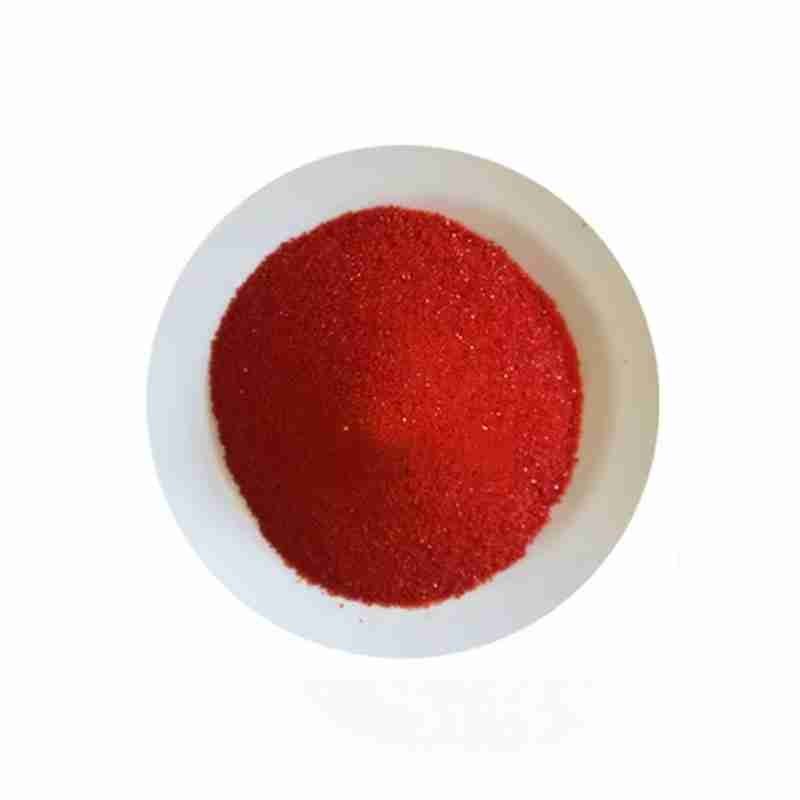Iron Oxide CAS #1317-61-9 Triiron Tetraoxide
Iron trioxide, chemical formula Fe3O4. Also known as iron oxide black, magnet, magnetite, or black iron, it is a black crystal with magnetism, hence it is also called magnetic iron oxide. It cannot be pronounced as ??ferrous metaferrite?? or ??ferrous metaferrite?? Fe (FeO2) 2, and is not a mixture of iron oxide and ferrous oxide, but can be approximated as a compound of ferrous oxide and ferrous oxide. This substance is soluble in acids, insoluble in water, alkali, and organic solvents such as ethanol and ether. Natural ferric oxide is insoluble in acids and can easily oxidize into ferric oxide in the air in humid conditions. Usually used as a pigment and polishing agent, it can also be used to manufacture audio tapes and telecommunications equipment.
发送询盘
Iron Oxide CAS #1317-61-9 Triiron Tetraoxide
| Triiron tetraoxide Basic information |
| Physical Properties?Occurrence and Uses?Preparation?Reactions |
| Product Name: | Triiron tetraoxide |
| Synonyms: | Iron(II,III) oxide, 98% (metals basis);Iron(II,III) oxide, 97% (metals basis);Iron(II,III) oxide, 99.95% (metals basis);Iron(II,III) oxide: (Ferrosoferric oxide
: Iron(III) oxide);Iron (II, III) oxide, 99.5% min (metals basis);Iron (II,III) oxide, 96% (metals basis) Synthetic black iron oxide;Iron(II,III) oxide, Puratronic, 99.997% (metals basis);Iron oxide, magnetic nanoparticles solution |
| CAS: | 1317-61-9 |
| MF: | Fe3O4-2 |
| MW: | 231.53 |
| EINECS: | 215-277-5 |
| Product Categories: | nano structured material;metal oxide;Inorganics |
| Mol File: | 1317-61-9.mol |
 |
|
| Triiron tetraoxide Chemical Properties |
| Melting point | 1538???C(lit.) |
| density | 4.8-5.1?g/mL?at 25???C(lit.) |
| refractive index | 3.0 |
| Fp | 7???C |
| storage temp. | -20??C |
| solubility | Aqueous Acid (Slightly) |
| form | powder |
| color | black |
| Specific Gravity | 5.2 |
| Odor | at 100.00?%. odorless |
| Water Solubility | Insoluble in water and organic solvents. Soluble in concentrated mineral acids. |
| Merck | 14,4040 |
| Stability: | Stable. Incompatible with strong acids, chloroformates, peroxides. |
| CAS DataBase Reference | 1317-61-9(CAS DataBase Reference) |
| NIST Chemistry Reference | Iron(ii,iii) oxide(1317-61-9) |
| EPA Substance Registry System | Iron oxide (Fe3O4) (1317-61-9) |
- 2
- 2-diallylpent-4-en-1-amine
- 4
- 95-16-9
- Ammonium sulfamate
- Benzothiazole
- cas:67889-00-3ح2
- cas:83524-75-8 | pigment black 32
- cas:928836-00-4 | 2
- cas:932745-70-5 | 4
- Chemical Minerals
- Coconut diethanolamide
- Daily Chemicals
- discount
- for sale
- General pvc resin
- hexyl D-glucoside
- in stock
- Lauramidopropyl betaine
- LAURIC ACID MONOETHANOLAMIDE
- Petroleum Additives
- Plasticiser
- Ploymers
- price
- PVC
- quotation
- Raw Materal
- Remove term: Petroleum Additives Petroleum Additive
- SODIUM ETHYL 2-SULFOLAURATE
Related Products
Chemical Name: Dehydrocholic acid
Synonyms: Acide dehydrocholique; Triketocholanic acid
CAS No.: 81-23-2
Molecular Formula: C24H34O5
Molecular Weight: 402.53
Appearance: Powder
Aluminum chlorohydrate is an inorganic compound often used as a coagulant in water treatment processes. It is also known for its astringent properties and is utilized in various personal care products, such as antiperspirants and deodorants, due to its ability to temporarily close sweat glands. It enhances the viscosity and stability of formulations, making it a valuable ingredient in cosmetics and pharmaceuticals.
Chemical Name: Choline salicylate
CAS No.: 2016-36-6
Molecular Formula: C12H19NO4
Molecular Weight: 241.28
Appearance: Red-Brown Crystal
Carbon is a fundamental element found in all organic life and a key component of many inorganic materials. It is known for its ability to form long chains and complex structures, which makes it the basis of various compounds, including diamond, graphite, and fullerenes. Carbon is used in a wide range of applications, from manufacturing steel and other alloys to being a key element in batteries and as a pigment in inks and paints.
Chemical Name: Zinc citrate
Synonyms: Zinc citrate trihydrate
CAS No.: 546-46-3
Molecular Formula: C6H8O7Zn
Molecular Weight: 257.5
Appearance: White powder
Chemical Name: 1,1,2,2-Tetrachloroethane
Other Name: Tetrachlorethane
CAS No.: 79-34-5
Molecular Formula: C2H2Cl4
Molecular Weight: 167.85
Appearance: Liquid
Chemical Name: Potassium Castorate
CAS No.: 8013-05-6
Molecular Formula: C57H107K3O12
Molecular Weight: 1101.74718
Appearance: Yellow Liquid
Chemical Name: Ashwagandha Extract
Synonyms: Withania somnifera, ext.; Withania Somnefera Extract
CAS: 90147-43-6
Appearance: Brown
Strontium chloride is an inorganic compound with the chemical formula SrCl2. It is a white crystalline solid that is highly soluble in water. This compound is used in various applications, including the production of strontium salts for??? and pyrotechnics, where it imparts a deep red color to the flame. Additionally, strontium chloride is utilized in metallurgy as an ingredient in alloys and in the medical field for certain diagnostic procedures. Its chemical properties make it a valuable substance in a range of industrial and scientific applications.
Chemical Name: 3-Hydroxybutyric acid
CAS No.: 625-71-8
Molecular Formula: C4H8O3
Molecular Weight: 104.1
Appearance: White powder
Aluminum chlorohydrate is an inorganic compound often used as a coagulant in water treatment processes. It is also known for its astringent properties and is utilized in various personal care products, such as antiperspirants and deodorants, due to its ability to temporarily close sweat glands. It enhances the viscosity and stability of formulations, making it a valuable ingredient in cosmetics and pharmaceuticals.
Ammonium sulfamate is a white crystalline compound with the chemical formula (NH4)2SO3. It is a versatile chemical used in various applications, including as a flame retardant, a fertilizer ingredient, and a chemical intermediate. In the agricultural sector, it serves as a source of nitrogen, promoting plant growth. As a flame retardant, it is effective in reducing the flammability of materials. Additionally, it is used in the synthesis of other chemicals due to its reactivity with amines and other organic compounds. Its properties make it a valuable component in a range of industrial processes.

















